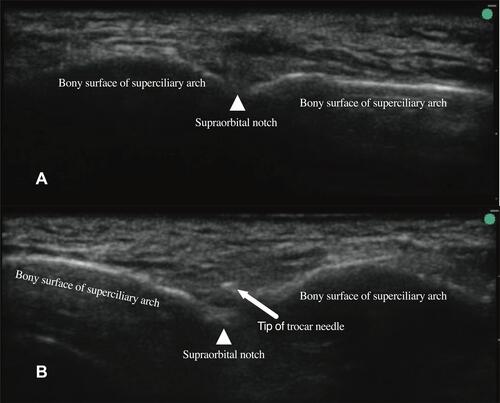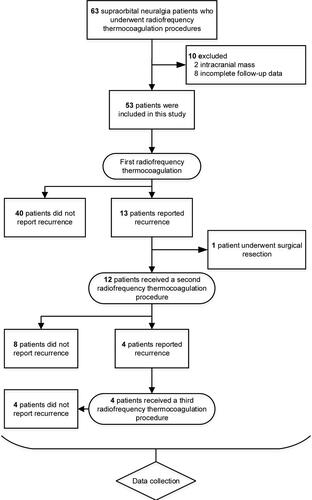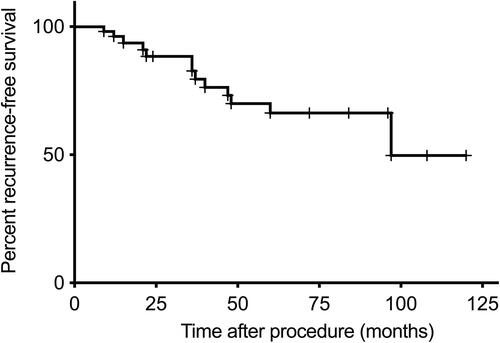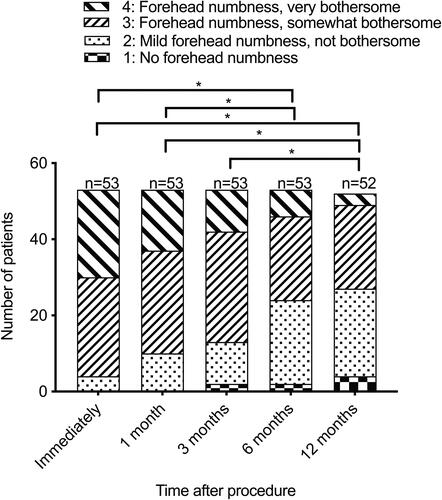Figures & data
Figure 1 Ultrasound-guided supraorbital nerve puncture procedure.
Notes: (A) An ultrasound image of the supraorbital notch (white triangle). The high frequency linear transducer was moved from the forehead caudally to locate the supraorbital notch (white triangle), which is a small groove on the bony surface; (B) ultrasonography imaging showing that the tip of the radiofrequency treatment trocar needle (white arrow) has reached the supraorbital notch (white triangle) via the out-of-plane approach.

Figure 2 Flow diagram of the study populations.
Notes: A total of sixty-three supraorbital neuralgia patients underwent an ultrasound-guided radiofrequency thermocoagulation procedure. Fifty-three patients who satisfied the protocol requirements were included in this study. Thirteen patients had pain recurrence, and twelve of them received repeated radiofrequency thermocoagulation. Four of the twelve patients relapsed again, and a third radiofrequency thermocoagulation procedure was performed.

Table 1 Demographic Data and Baseline Characteristics of the Supraorbital Neuralgia Patients
Figure 3 Kaplan-Meier recurrence-free survival curves for supraorbital neuralgia patients who underwent ultrasound-guided radiofrequency thermocoagulation procedures.
Notes: The median follow-up time of the 53 patients was 36.0 months (IQR, 12.0–72.0 months). A total of 13 patients experienced pain recurrence with a median recurrence-free time of 97 months. X-axis: follow-up time after procedure (months); Y-axis: the cumulative proportion of recurrence-free survival; +censoring.

Figure 4 The BNI facial numbness score for the supraorbital nerve innervation.
Notes: Regarding the BNI facial numbness score, 53 patients completed the first 6 months of follow-up, and 52 patients completed 12 months of follow-up (one patient relapsed 9 months after the procedure and was retreated with radiofrequency thermocoagulation). The Friedman test was performed in 52 patients who completed the one-year follow-up. Bonferroni correction was used to correct multiple comparisons. The numbness scores at 6 and 12 months after the procedure were significantly different from those immediately and 1 month after the procedure; the numbness scores at 12 months after the procedure were also significantly different from those 3 months after the procedure. *P<0.05/10=0.005. X-axis: follow-up time after procedure (months); Y-axis: number of patients.

